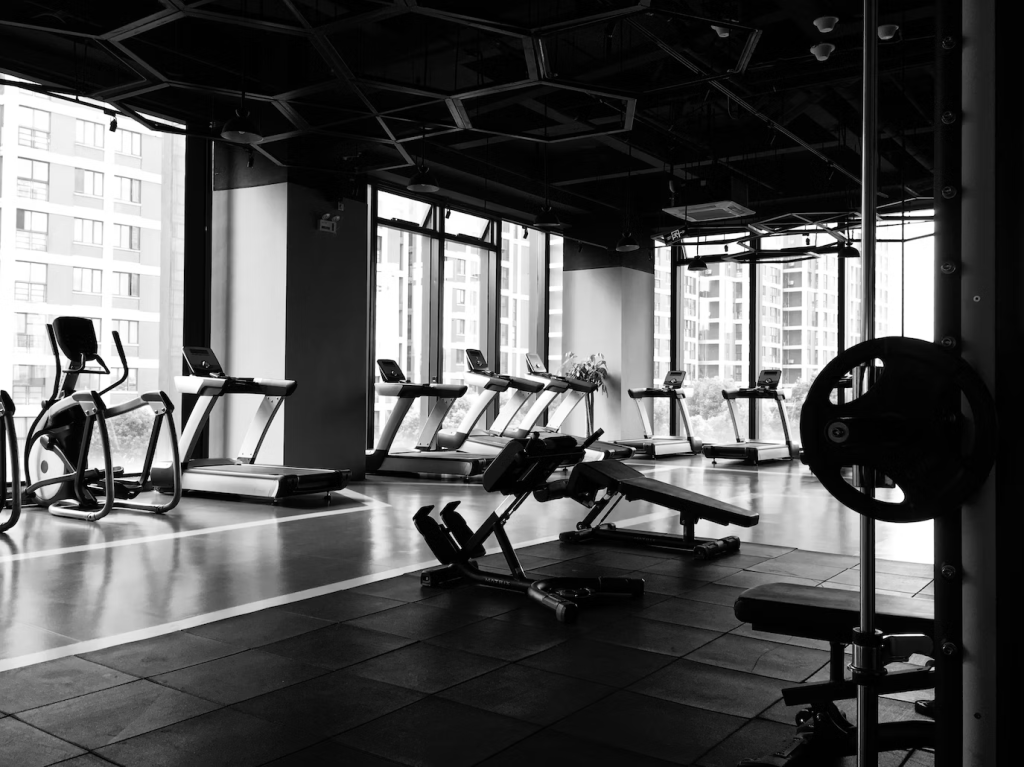To make a fitness centre more conducive to physical activity, it is essential to plan, furnish, and organise the space in a particular manner. This is what is known as a gym fit-out. A well-executed fit-out will result in a gym that is not just appealing but also functional and secure. This is true regardless of whether the building is brand new or an older one that is undergoing renovation.

The selection and organisation of workout equipment, the optimisation of space utilisation and layout, the consideration of safety considerations, and the creation of a gym that is a motivating and invigorating environment for people to work are all components of this all-encompassing process.
During the process of fitting out the gym, it is important to give careful consideration to the specific requirements and goals of the gym. This will ensure that the gym can accommodate a wide range of workouts and that it satisfies the expectations of its users.
In this article, we will discuss the fundamental components of a gym fit-out, including the necessity of meticulous design, equipment selection, and general planning in the construction of a gym that encourages a healthy and active lifestyle.
Specifically, we will highlight the importance of these factors. This essay will attempt to shed some light on the specifics of a gym fit-out, and it will do so for both those who run a gym, those who are fitness enthusiasts, and those who are simply interested in the topic of fitness facility design.
What Is A Gym Fit Out?
The term “gym fit-out” describes the steps taken to transform an existing gym into an area that is both aesthetically pleasing and fully equipped to accommodate members’ needs for physical training.
It entails picking out and arranging exercise machines, making the most of available space through layout optimisation, and making an atmosphere that encourages and helps people reach their fitness objectives.
Among the most important parts of a gym renovation are:
- Space Planning: Determining the layout of the gym to maximize the use of available space, considering factors such as traffic flow, zoning for different workout areas, and ensuring sufficient space between equipment.
- Equipment Selection: Choosing the right mix of fitness equipment based on the gym’s target audience and fitness goals. This may include cardio machines, strength training equipment, free weights, and functional training tools.
- Aesthetic Design: Creating a visually appealing atmosphere through the use of colour schemes, lighting, flooring, and branding. A well-designed gym can enhance the user experience and promote a positive workout environment.
- Safety Considerations: Implementing safety measures such as proper spacing between equipment, and emergency exits, and ensuring that flooring and surfaces are slip-resistant and durable.
- Technology Integration: Incorporating modern fitness technologies, such as smart equipment, fitness tracking systems, and audio-visual components, to enhance the overall user experience and engagement.
- Accessibility: Ensuring that the gym is accessible to individuals with disabilities, providing amenities such as ramps, accessible bathrooms, and equipment modifications if necessary.
- Storage Solutions: Designing storage areas for gym accessories, towels, and personal belongings to maintain a clean and organized workout space.
The success of any fitness centre, whether brand new or renovated, hinges on the quality of the fit-out. It’s the finishing touch that makes all the difference in drawing in members and keeping them coming back for more. The size, demographics, and guiding principles of a fitness centre dictate the particulars of its fit-out.
What Are The Steps To Fit Out?
To have a well-designed and functional fitness centre, there are usually several critical processes involved in the fit-out process. Here is a high-level rundown of what goes into a gym fit-out, though details might change depending on things like the space available, the budget, and the intended users:
Needs Assessment and Planning
- Identify the goals and objectives of the gym.
- Determine the target audience and their fitness preferences.
- Assess the available space and create a floor plan.
Budgeting
- Establish a budget for the fit-out, considering equipment costs, construction, design, and other related expenses.
Design Concept
- Develop a design concept that aligns with the gym’s brand and target audience.
- Consider aesthetic elements, colour schemes, lighting, and branding.
Space Planning
- Optimize the layout for efficient use of space.
- Allocate zones for different workout areas, such as cardio, strength training, and functional training.
Equipment Selection
- Choose appropriate fitness equipment based on the gym’s goals and target demographic.
- Consider factors like durability, functionality, and technology integration.
Safety and Compliance
- Ensure the design complies with safety regulations and building codes.
- Implement safety measures, such as proper spacing between equipment and emergency exits.
Construction and Installation
- Begin the construction process, which may include flooring installation, electrical work, and any necessary structural modifications.
- Install fitness equipment according to the floor plan.
Amenities and Facilities
- Plan for amenities such as changing rooms, showers, and storage areas.
- Consider accessibility for individuals with disabilities.
Technology Integration
- Install any technology components, such as audio-visual systems, fitness tracking devices, or smart equipment.
Aesthetics and Branding
- Implement the chosen design concept, incorporating branding elements throughout the gym.
- Ensure lighting and colour schemes enhance the overall atmosphere.
Testing and Quality Assurance
- Test all equipment and facilities for functionality and safety.
- Address any issues or adjustments needed.
Launch and Marketing
- Launch the gym with promotional activities and marketing efforts.
- Create awareness of the new or renovated facility among the target audience.
Monitoring and Feedback
- Continuously monitor the gym’s performance and gather feedback from members.
- Make adjustments or improvements based on user experiences and changing needs.
To create a gym that is functional, visually beautiful, and safe, it is necessary to pay close attention to detail at each stage of the fit-out process, and these steps are interdependent on one another. A well-coordinated and fruitful fit-out requires close cooperation among construction experts, equipment suppliers, interior designers, and architects.
Conclusion
In addition to being aesthetically beautiful, the purpose of a gym fit-out is to give members a fitness facility that is not just functional, safe, and motivating for them to use throughout their workouts. Planning, designing, and installing the space with great care is how this is accomplished.
Beginning with the first needs assessment and continuing through the launch, the success of the fit-out project is heavily dependent on each phase.
Through careful consideration of aspects such as aesthetics, space planning, equipment selection, and safety considerations, a fitness centre can be created to cater to the preferences and requirements of the people who are the intended users of the facility.
Budgeting and adhering to rules are two factors that have a significant impact on the overall effectiveness of the fit-out arrangement.
The user experience can be improved by the combination of amenities, well-designed branding, and cutting-edge technology.
When it is done well, a fitness club is only the beginning; it has the potential to become a community centre where individuals can meet others who share their interests and work towards shared fitness goals in an environment that is both inspiring and motivating.
Through constant monitoring, the collection of feedback, and adjustments based on user experiences, the fitness centre is designed to be dynamic and sensitive to changing needs over time.
A well-planned gym fit-out can be beneficial to both the owners of fitness centres and the users of those centres because it encourages a healthy lifestyle and increases the number of members with memberships.
For more information, visit cheap gyms canberra.

